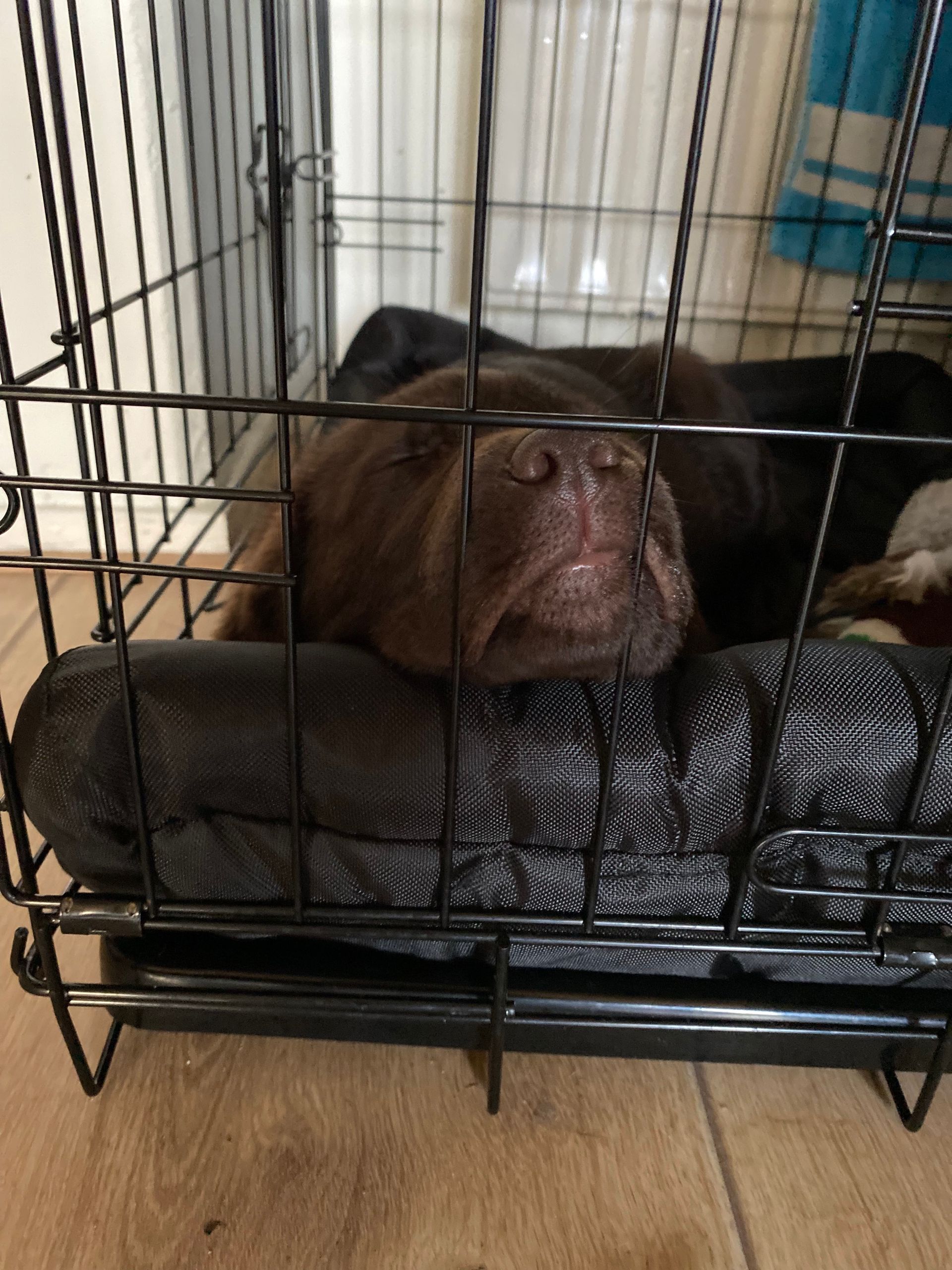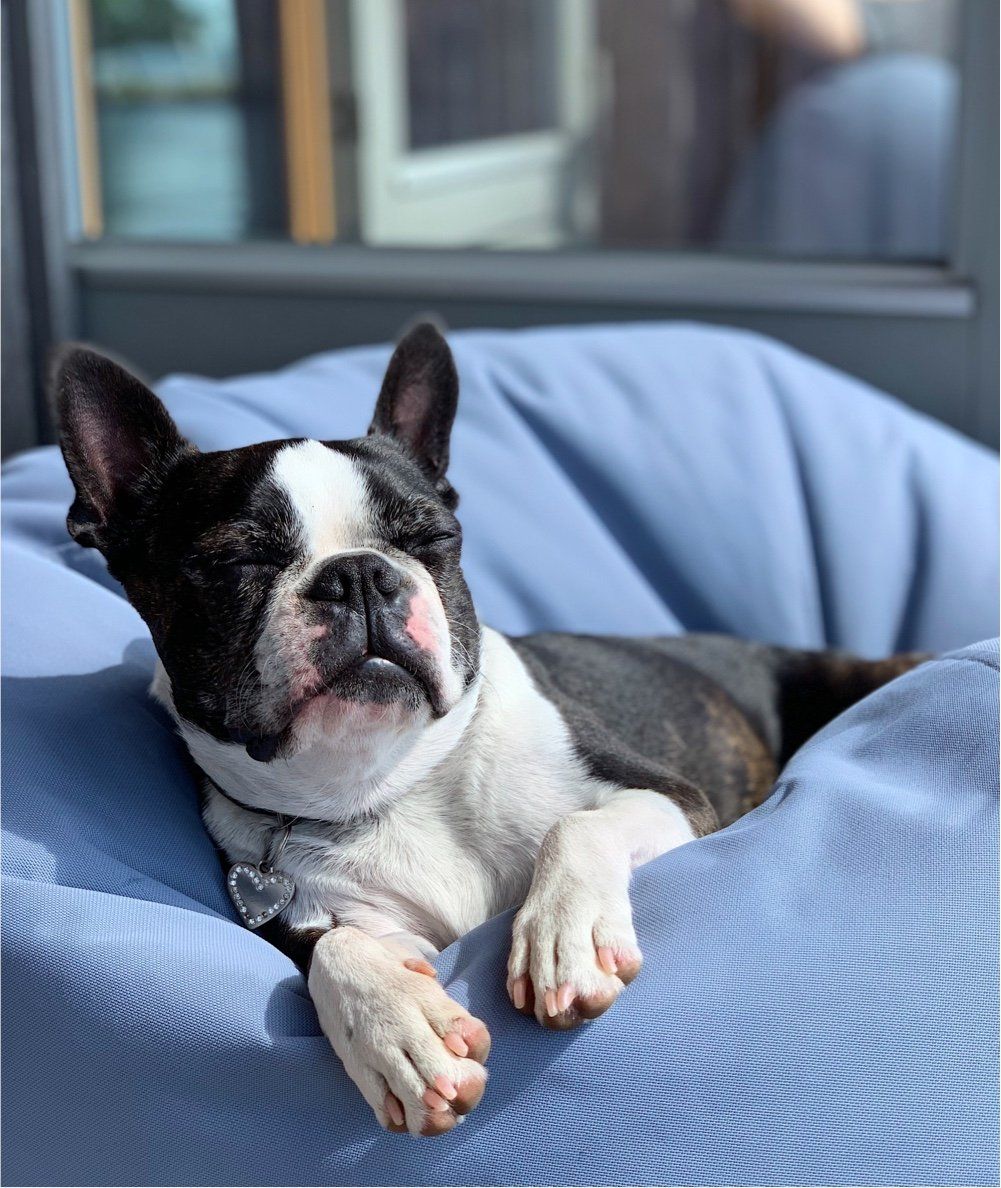Kate's Dog School Blog
Kate Stallworthy | 2025
The benefits of crate training
A crate or a gated area in your home is a useful tool when it comes to house breaking your puppy. Crate training can help dogs learn bladder and bowel control, provide them with a safe and comfortable space to retreat to and prevent destructive behaviour when left unsupervised.
Crates can also help aid separation anxiety as well as being a great way to travel with your dog. This training alongside positive reinforcement is a great way to ensure a happy and healthy experience for your puppy.
Here are some tips and benefits of crate training:

Toilet training aid: Crate training can be an effective tool for toilet training puppies. Dogs naturally avoid soiling their sleeping area, so if you properly introduce your puppy to the crate, they will be less likely to go to the toilet inside their crate. Make sure to choose an appropriately sized crate. It should be large enough for them to stand up, turn around and lie down comfortably, but not so large that they can use one end as a bathroom and the other for sleeping.
Positive reinforcement: Ensure the crate or gated area is a comfy and fun place to be for your puppy. Put their bed in there along with their favourite toys. By feeding them and rewarding them with treats when they go in there, you can help make the area as positive as possible. Make sure to introduce your puppy to the crate gradually and in a positive manner. With treats and toys, encourage them to explore and associate the crate with positive experiences.
A safe place: Crates provide a safe and secure space for puppies to retreat to when they need to rest or feel anxious. This can help them feel more comfortable and relaxed in their new environment. Keep in mind that the crate should not be used as a form of punishment. With patience and positive reinforcement, a crate can become a safe and comfortable space for your puppy to enjoy. You can also cover the crate with a blanket to create a cozy den-like environment.
Separation aid:
Puppies are often more susceptible to separation anxiety because they are still developing their sense of independence and may feel insecure when separated from their owners. Crate training can help alleviate some of these feelings by providing a safe and familiar space for the puppy. However, it's important to remember that crate training should be done gradually and with positive reinforcement to ensure a positive experience for your puppy.
Crate training advice
Kate's Dog School can help your new puppy adjust to their crate environment using positive reinforcement methods. As the juvenile period is the most testing when it comes to owning a puppy, it's really useful to get them used to the crate gradually. Crate training is an effective tool when it comes to the daunting task of toilet training as well as crucial separation work to avoid any anxiety in the future.
It's important to note that the crate or gated area will not have to be used throughout your dogs life. Dog trainers suggest using it for the house breaking part of your puppies life. The aim is for it to become a safe space for your dog where their bed is kept. Once your dog has reached maturity, you will find the crate is needed less and less and can be replaced by the bed in a space they can still call their own.

Book your free consultation today to talk about your puppy crate training needs
Follow me
@katesdogschool
OPENING HOURS
- Mon - Fri
- -
- Saturday
- -
- Sunday
- Appointment Only




































































































